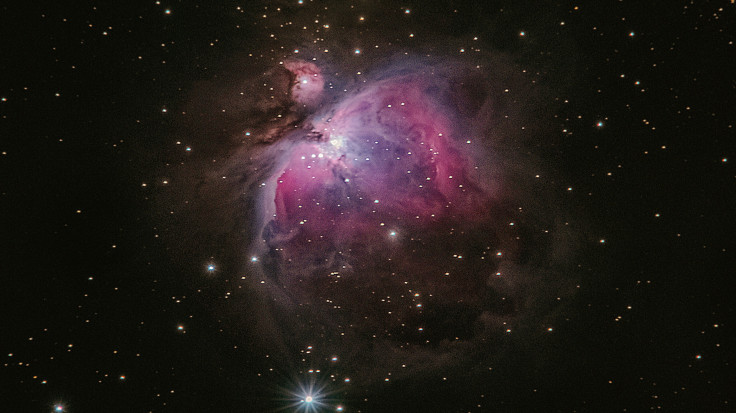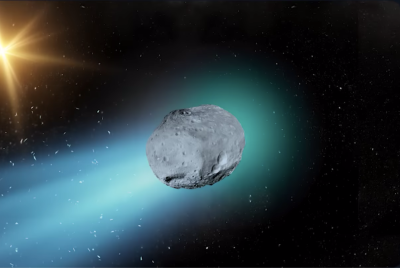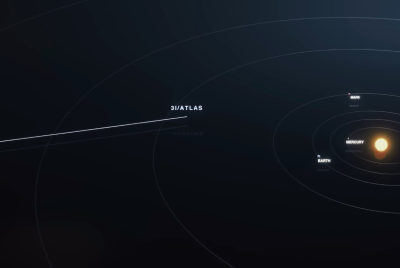NASA Unveils 3I/ATLAS's Secrets in Sharpest Photos, Offering Sky-Watchers a Glimpse of the Unknown
NASA's sharpest-ever images of interstellar object 3I/ATLAS could finally reveal whether it is a strange comet–or something far more mysterious.

Humanity is about to zoom in on one of the strangest visitors ever to sweep through our Solar System, as NASA is preparing to unveil the sharpest images yet of the Manhattan-sized interstellar object 3I/ATLAS. The release could finally move the debate from wild speculation to hard evidence.
These images were snapped by the Mars Reconnaissance Orbiter's HiRISE camera as 3I/ATLAS cruised past the Red Planet between 1 October and 7 October. However, their release was delayed by the recent US government shutdown. NASA told The Post the long-awaited shots could arrive as early as next week, setting the stage for a major moment in space science.
Why 3I/ATLAS Is Getting A Deep-Space Close-Up
For astronomers, these new HiRISE images of 3I/ATLAS are not just prettier pictures. They are expected to be the highest-resolution views of the object ever obtained, beating previous snaps captured by the Hubble Space Telescope on 21 July.
The HiRISE camera offers a spatial resolution about three times better than Hubble, giving researchers their best chance yet to probe the object's core. Loeb stated that the HiRISE images will present one of the best opportunities to learn about the nucleus of the massive object, which, in turn, should help reveal its true nature.
'The HiRISE image would give us a side-view as well as a spatial resolution that is three times better than that of the Hubble Space Telescope,' he said.
'Even though the image is unlikely to resolve the solid nucleus itself, it can set a tight constraint on its diameter based on the brightest pixel,' he said, adding, 'A picture is worth a thousand words.'
How 3I/ATLAS Sparked An 'Alien Object' Debate
Part of what makes 3I/ATLAS so compelling is that it simply does not behave like a normal comet. The interstellar visitor carries a bizarre 'anti-tail'–a stream of dust that appears to point towards the Sun rather than away from it.
Loeb has previously sounded the alarm over this weird feature, noting that it is 'not seen in everyday comets'. That has fuelled his more provocative suggestion that 3I/ATLAS could be something other than a standard lump of rock and ice, and has led some to wonder whether an artificial origin can be ruled out.
Harvard astrophysicist Avi Loeb, who has conjectured that the object could potentially be an alien spaceship, panned the long-delayed release as a symptom of government inefficiency.
For him, the upcoming images are not just another dataset; they are a potential turning point in a debate that ranges from conservative comet models to ideas straight out of science fiction.
NASA to share best-quality images of Manhattan-sized interstellar object 3I/ATLAS, disclose its true nature
— Milinda Muller (@MilindaMul46378) November 15, 2025
Story by Shane Galvin • 4h • pic.twitter.com/U3YmAswRVw
Why 3I/ATLAS Images Were Delayed By Bureaucracy
Behind the scenes, the timing of the release has become a story in its own right. The HiRISE images of 3I/ATLAS were captured weeks ago, but the government shutdown meant they sat unseen, even as curiosity and speculation climbed.
'Science should have been prioritised over bureaucracy,' Loeb told The Post. 'The truth about the nature of 3I/ATLAS will be revealed by the sharing of data, not by the storyline of gatekeepers.'
His criticism taps into a wider frustration among scientists and sky-watchers who feel that politics too often slows our ability to understand the universe. While the delay may not change the science itself, it has certainly ramped up expectations for what these images might reveal.
What Happens Next As 3I/ATLAS Heads For Jupiter
For now, 3I/ATLAS has done something unusual for an interstellar object: it has stayed intact. Earlier this week, sky watchers celebrated when, after fears it had broken apart during a close encounter with the Sun, the object emerged still in one piece.
Meanwhile, 3I/ATLAS is slingshotting toward Jupiter, where NASA's Juno spacecraft and ESA's JUICE mission are expected to track its progress until it exits the Solar System in March.
For planetary scientists, that extended surveillance window is almost as valuable as the upcoming image dump.
Weird objects from outside the Solar System rarely give us this much time to study them. The new HiRISE images will not end all the arguments swirling around 3I/ATLAS, but they should narrow the possibilities and help answer the question many are now asking: rock, ice, or something stranger?
Next week's release is unlikely to settle every theory. It may, however, take 3I/ATLAS from internet rumour to one of the best-studied interstellar visitors in history, and bring us one step closer to knowing whether this is just another cosmic snowball or an outlier with a story no one has decoded yet.
© Copyright IBTimes 2025. All rights reserved.





















